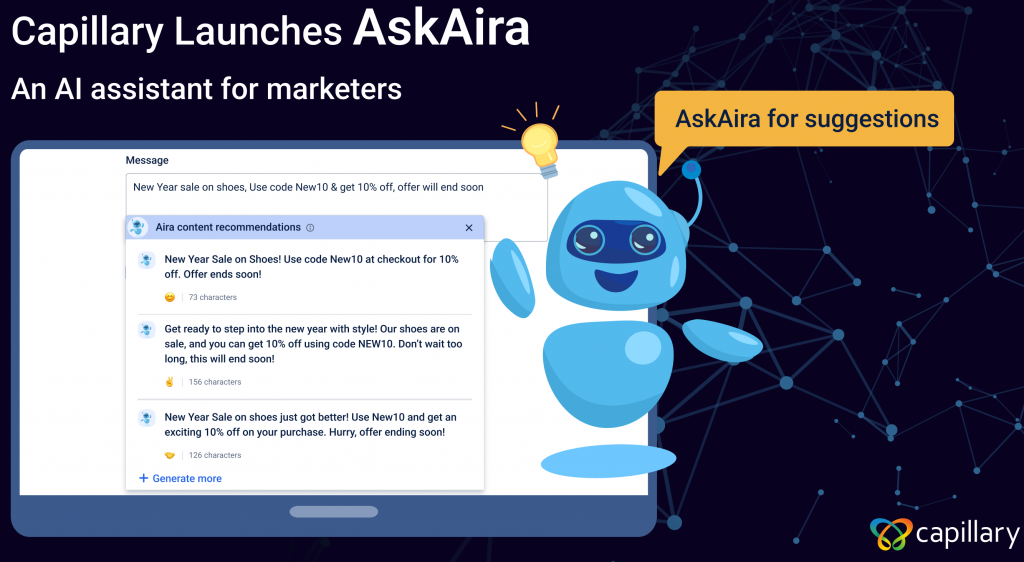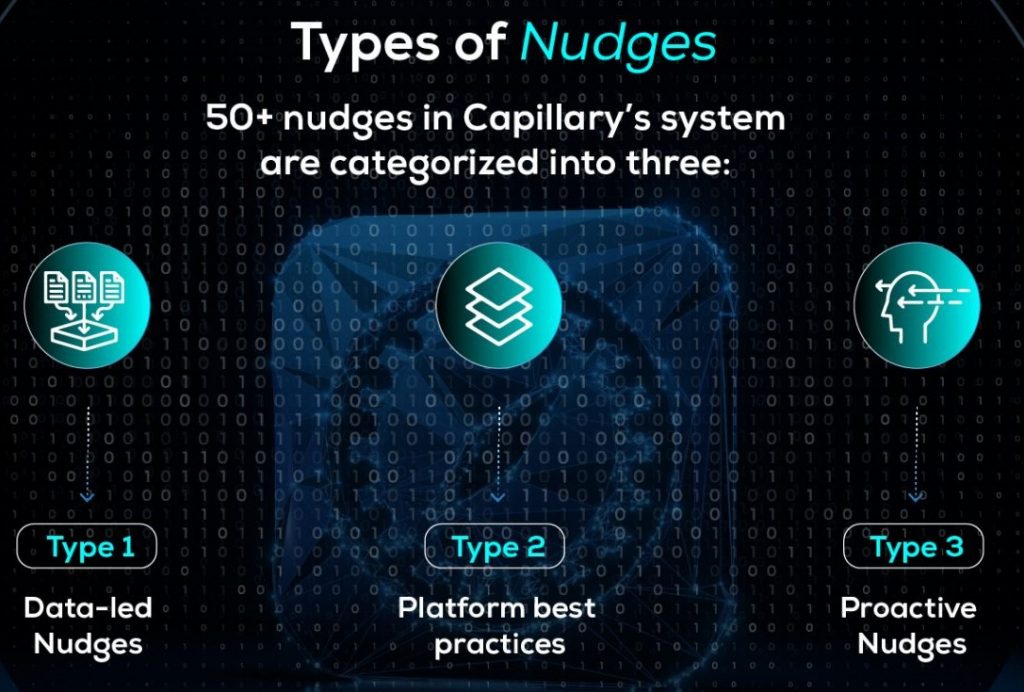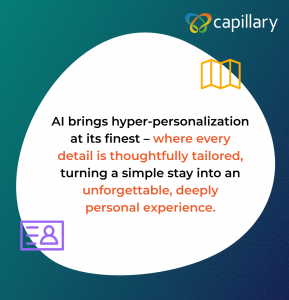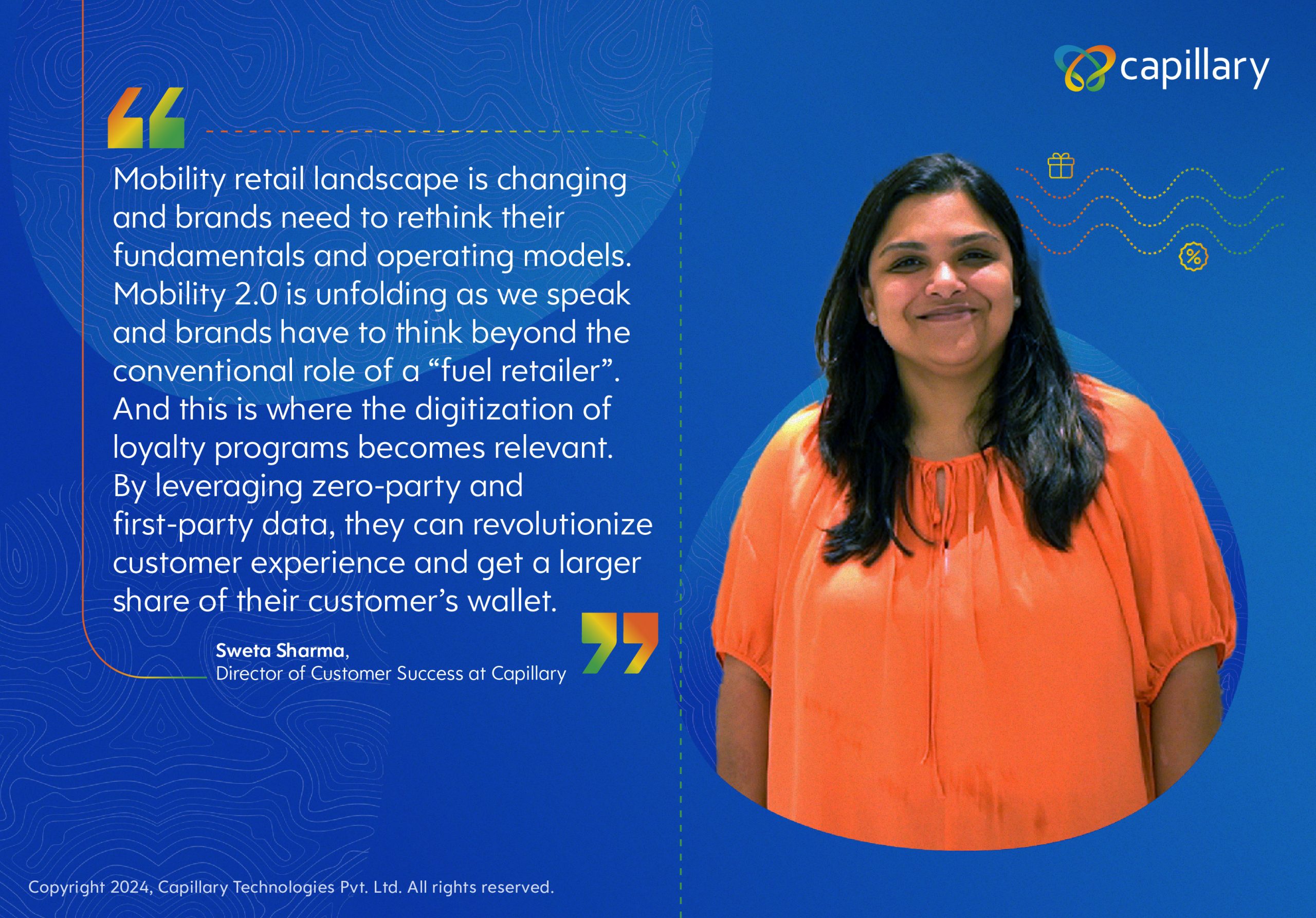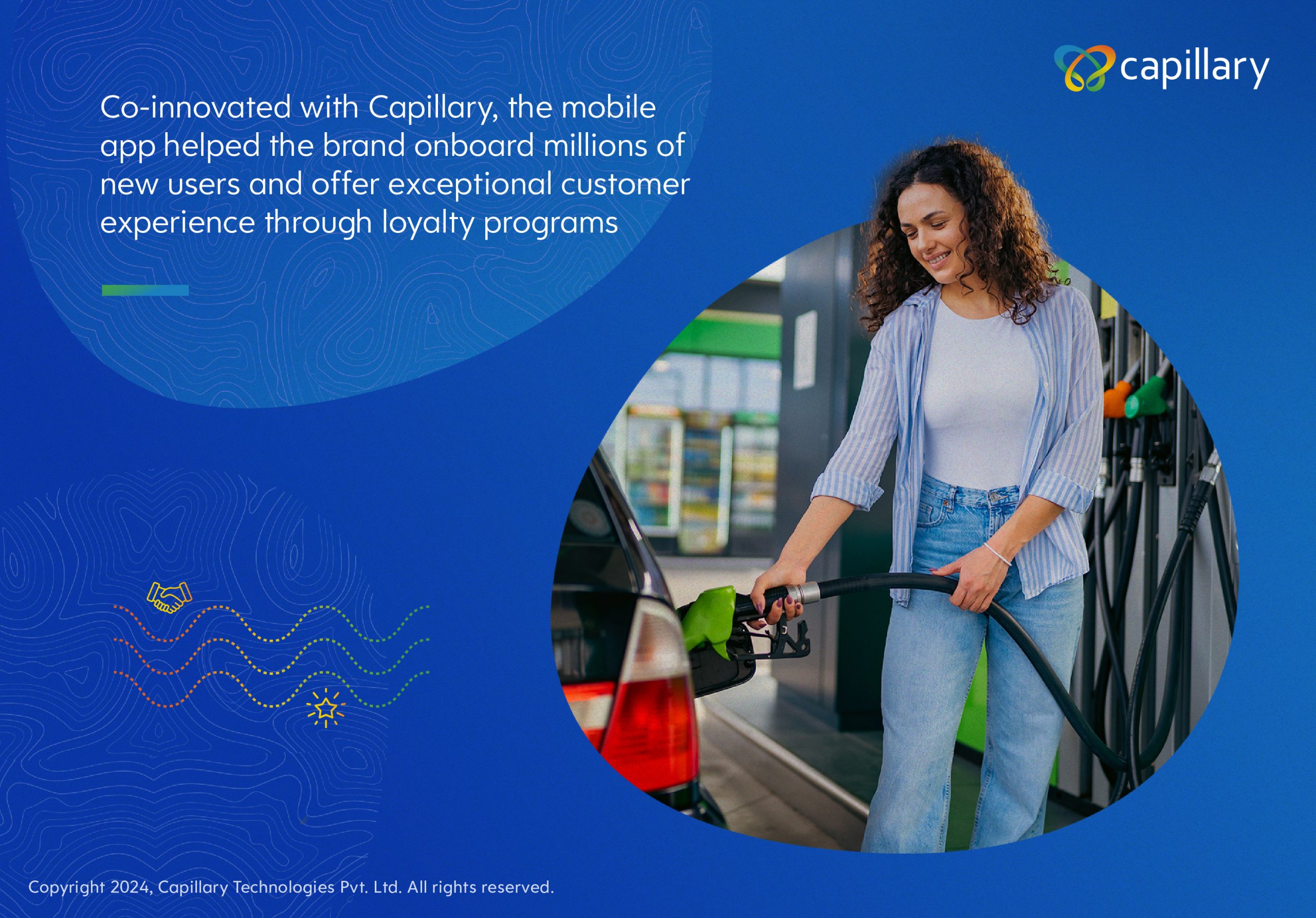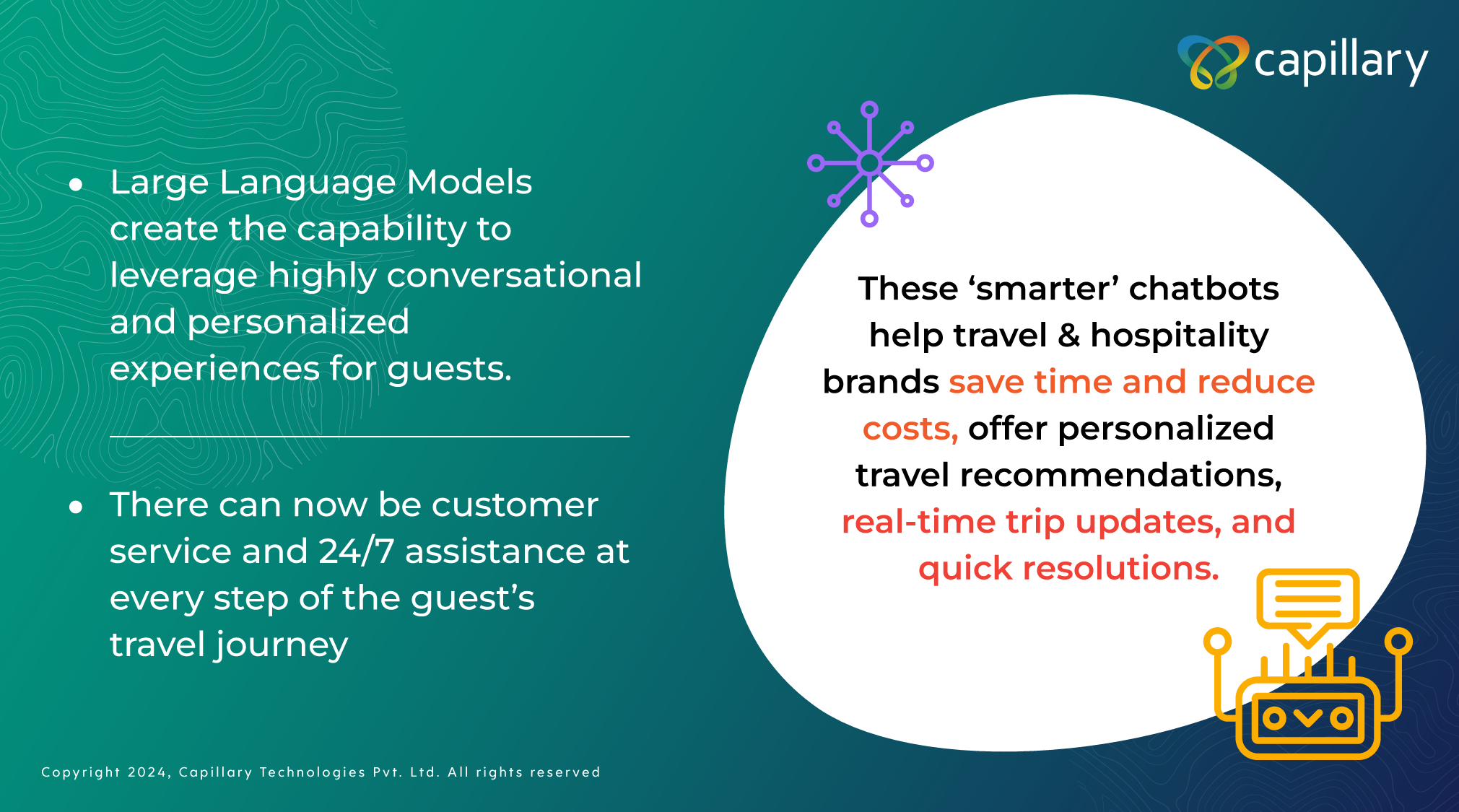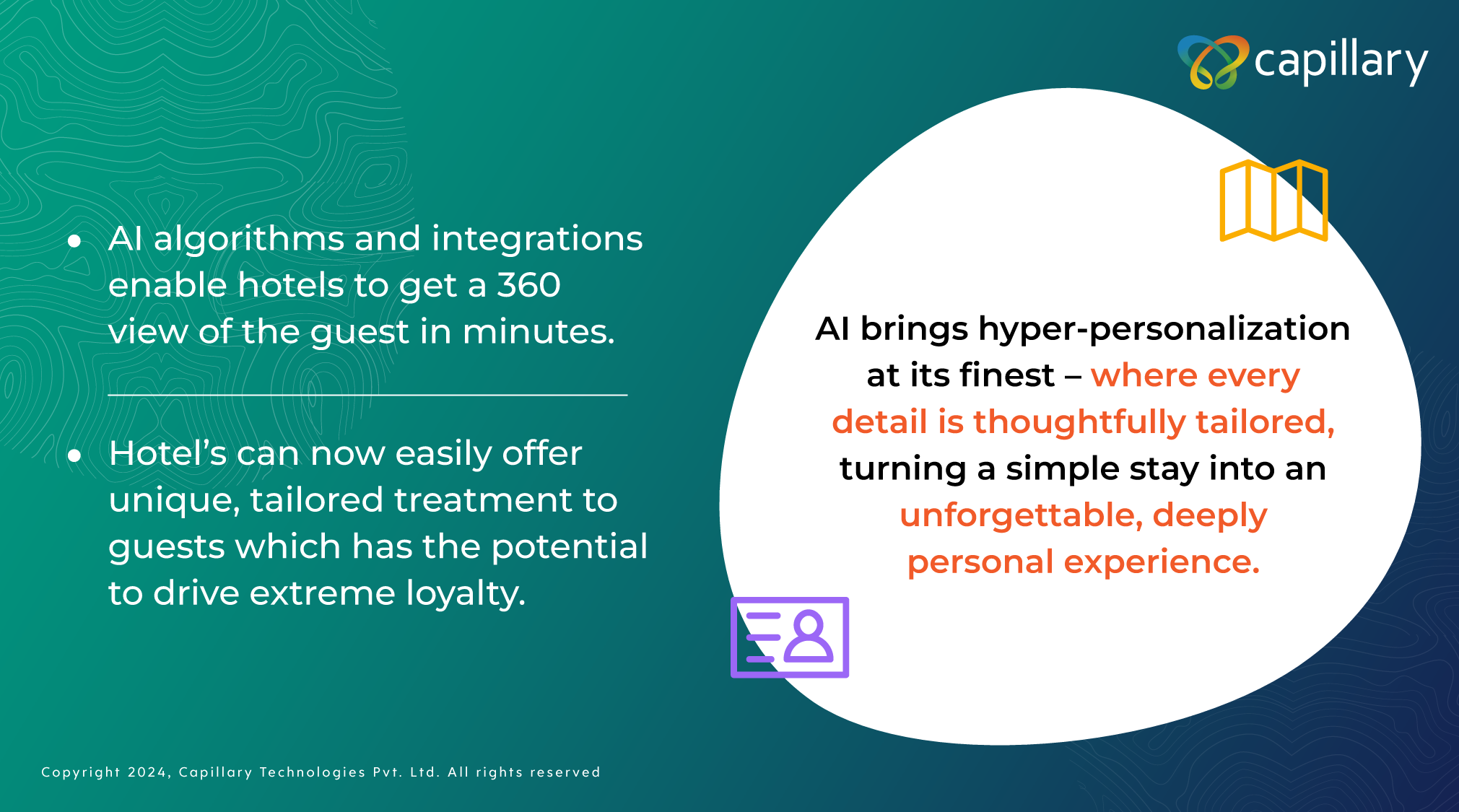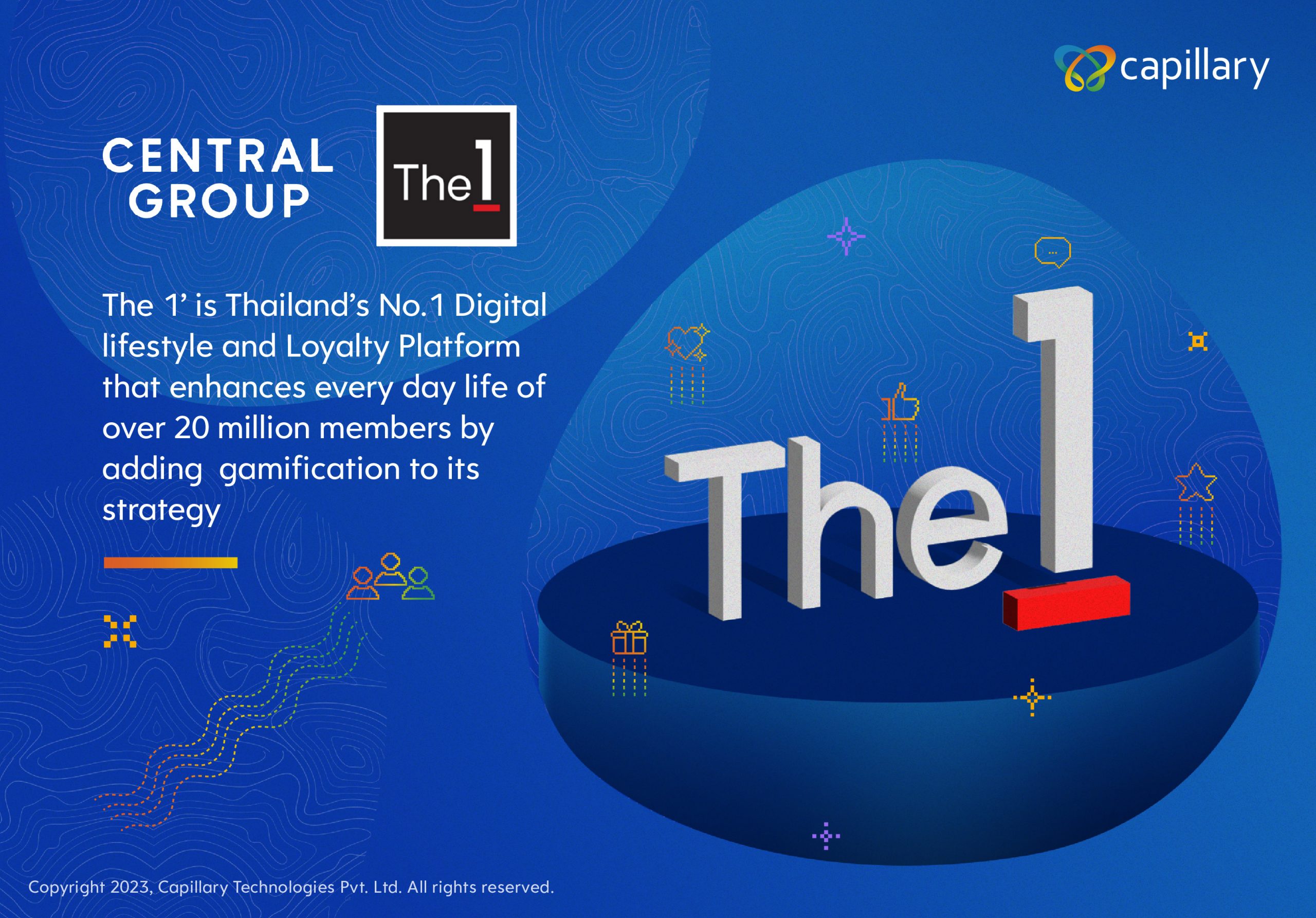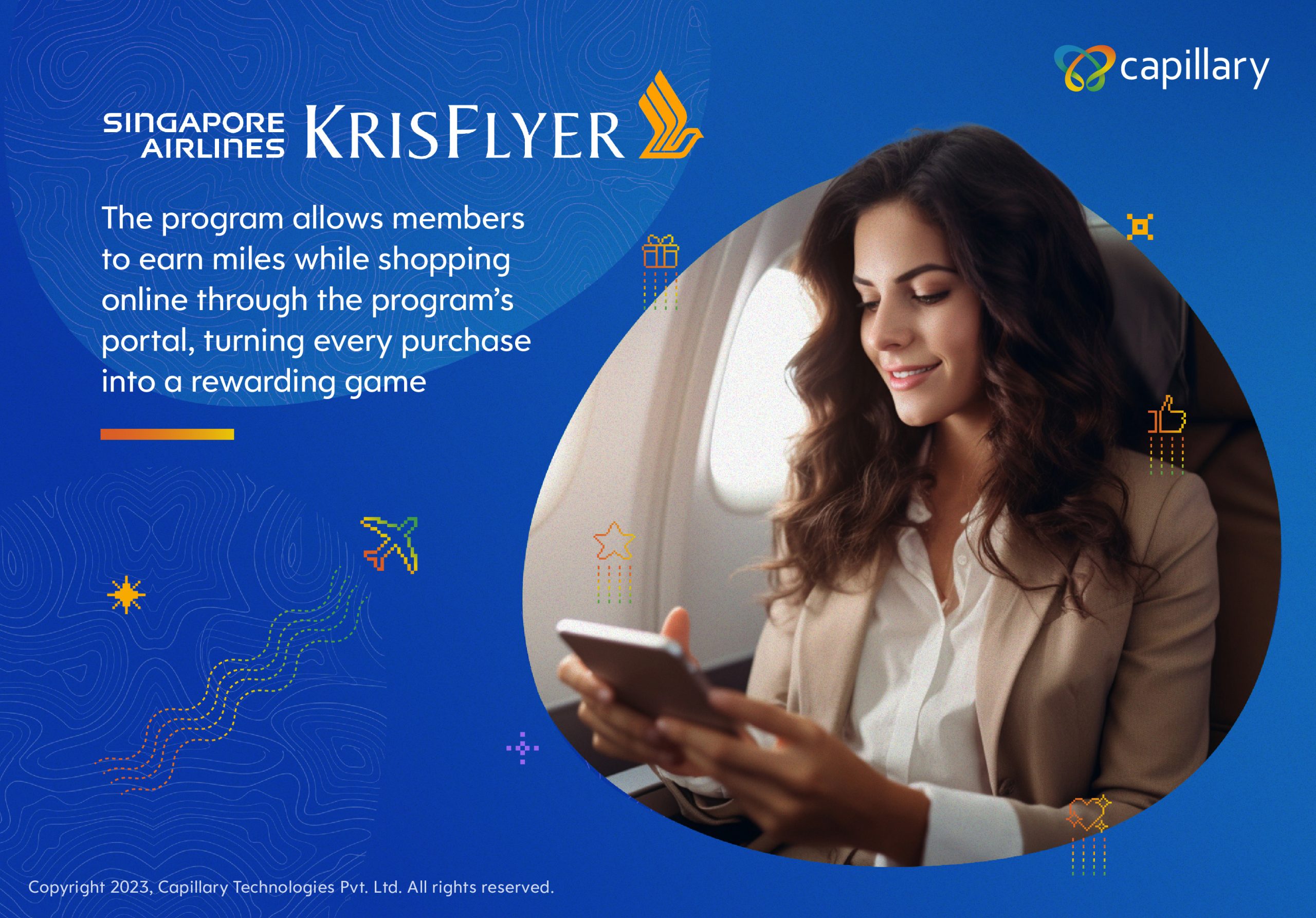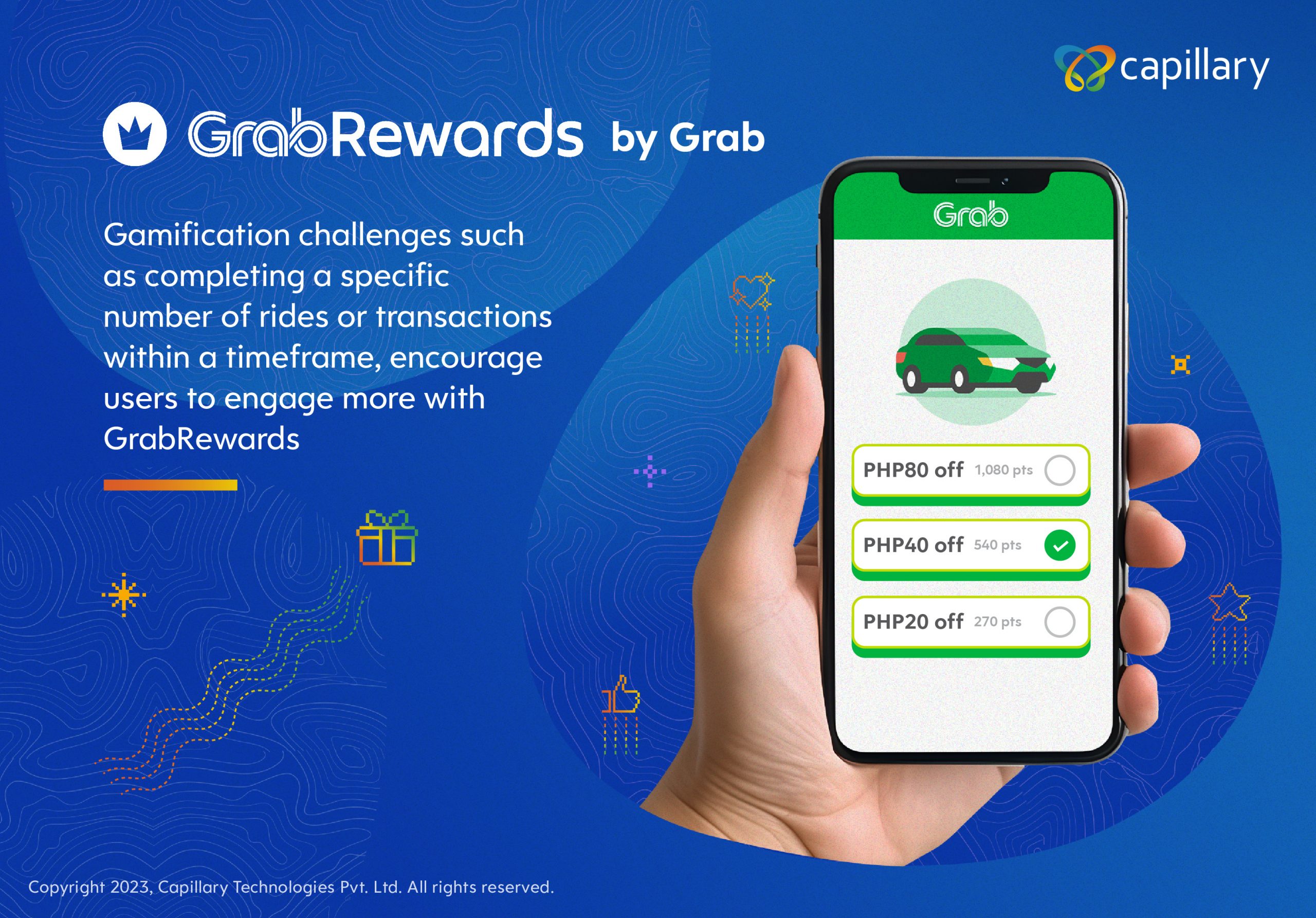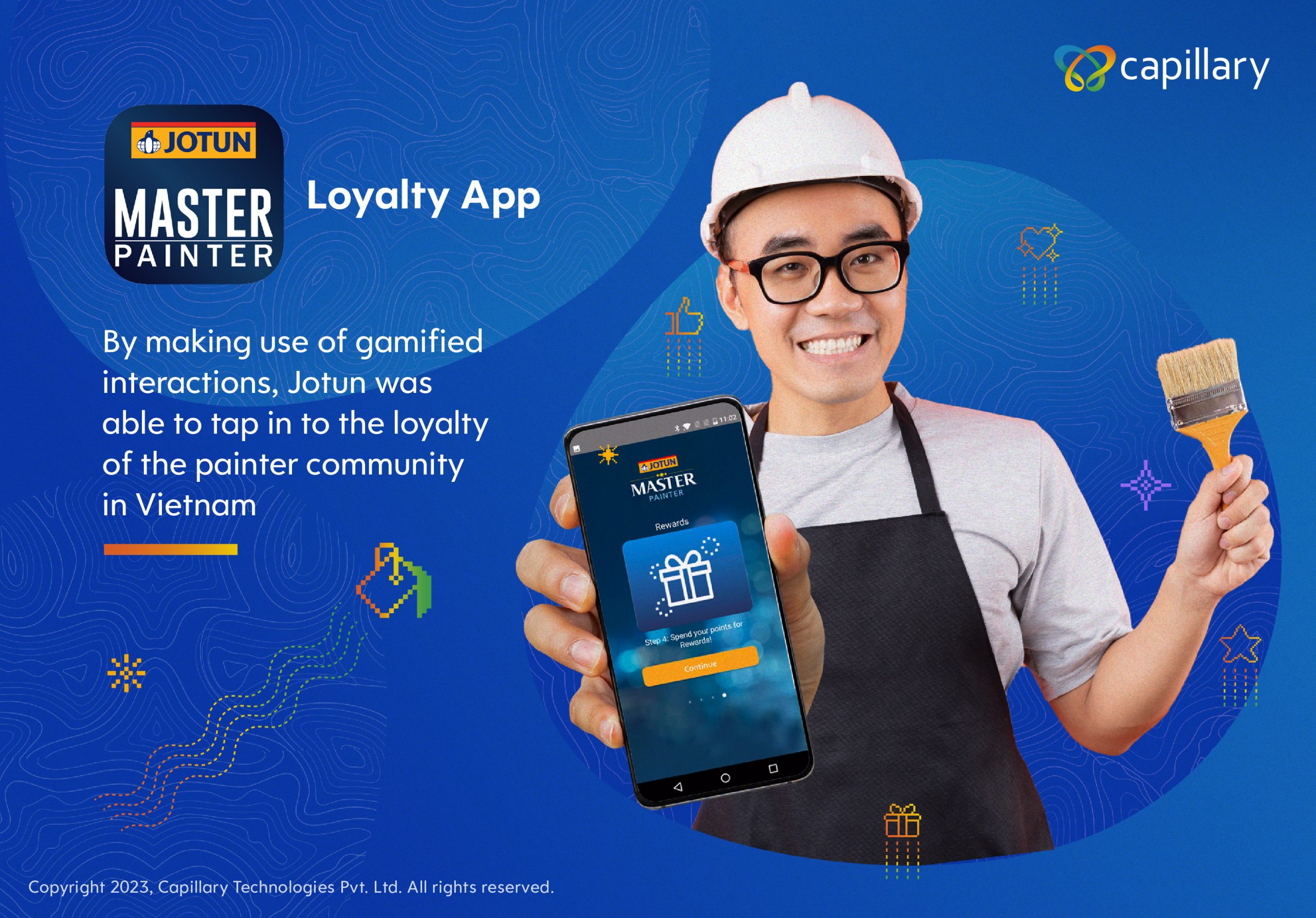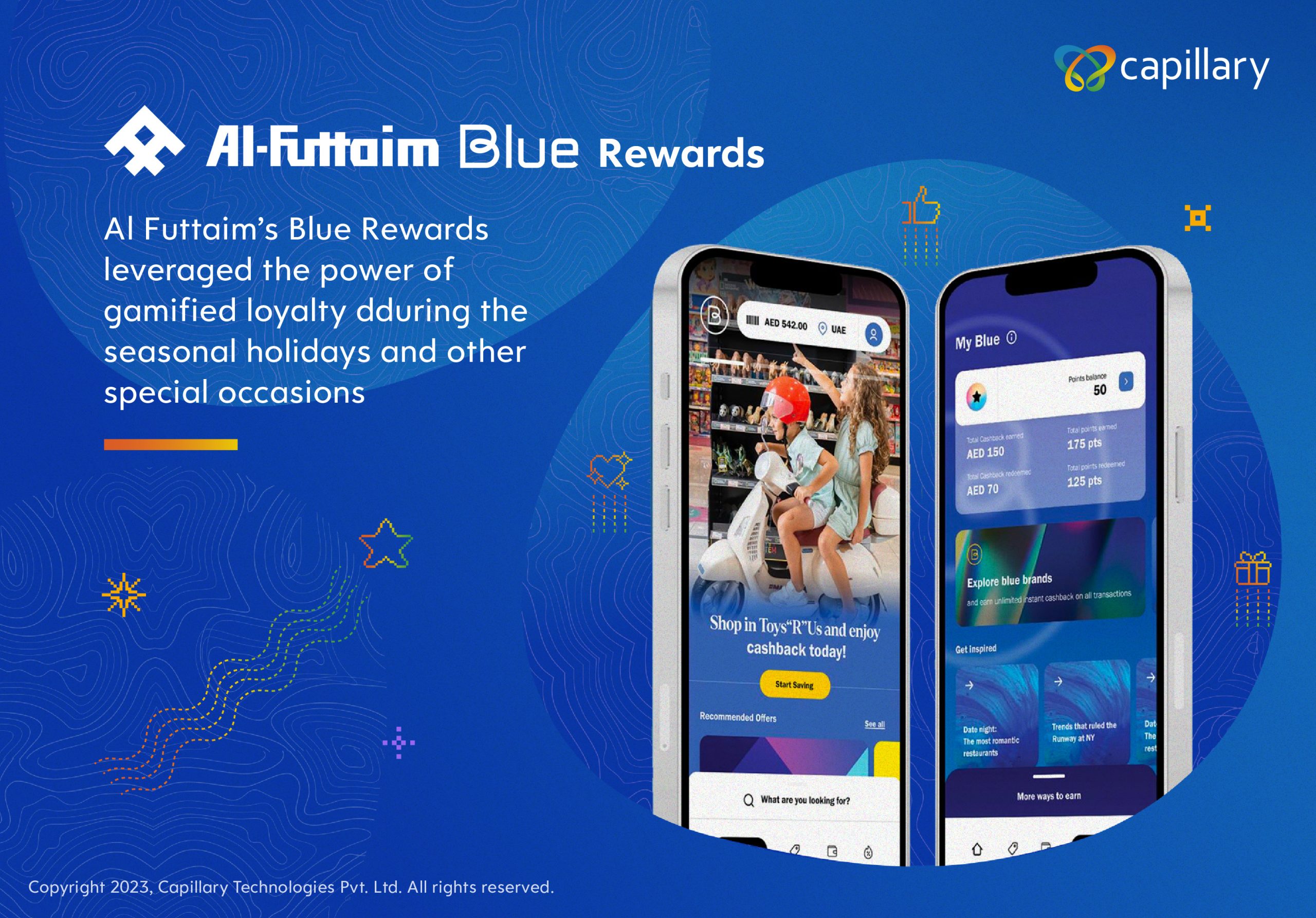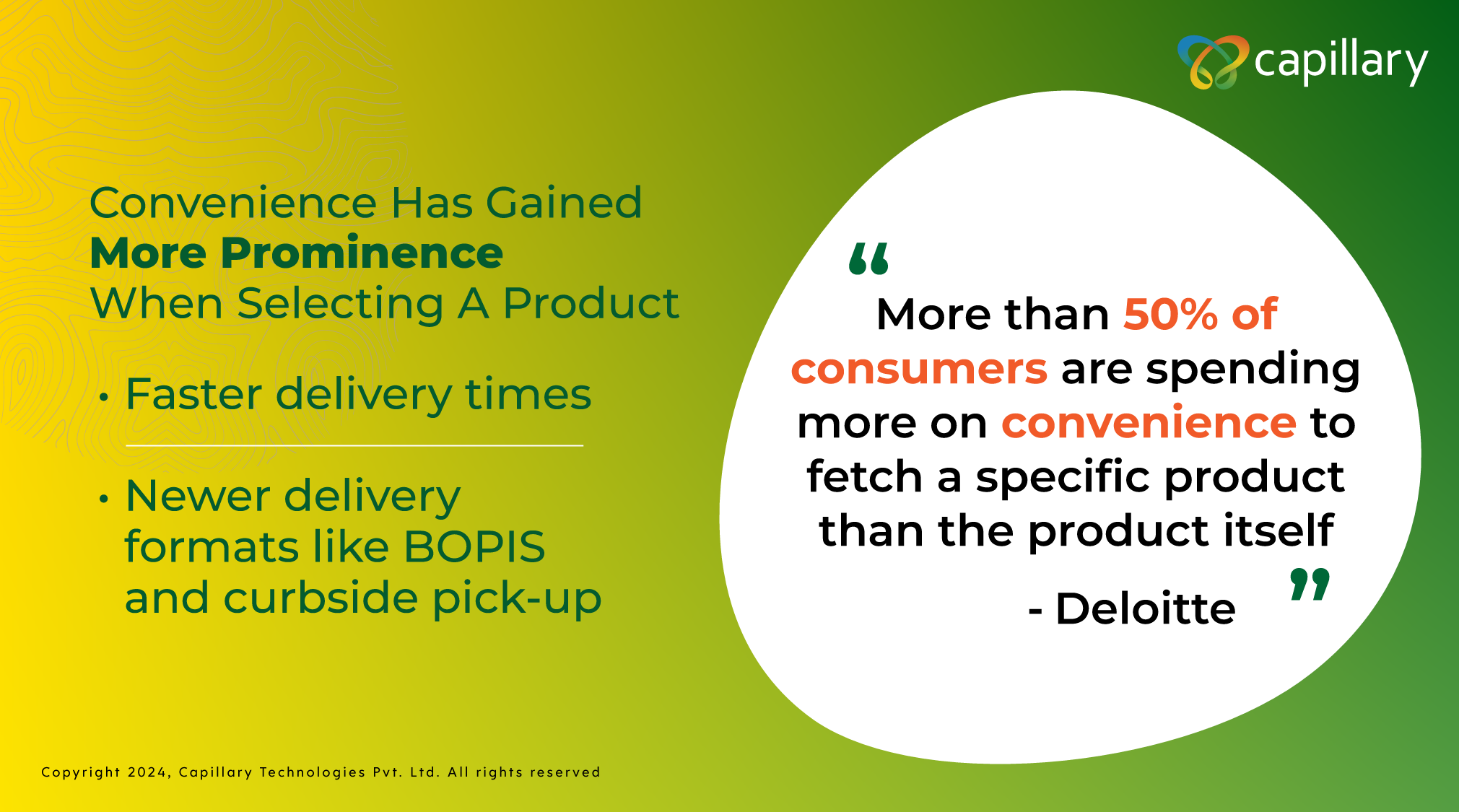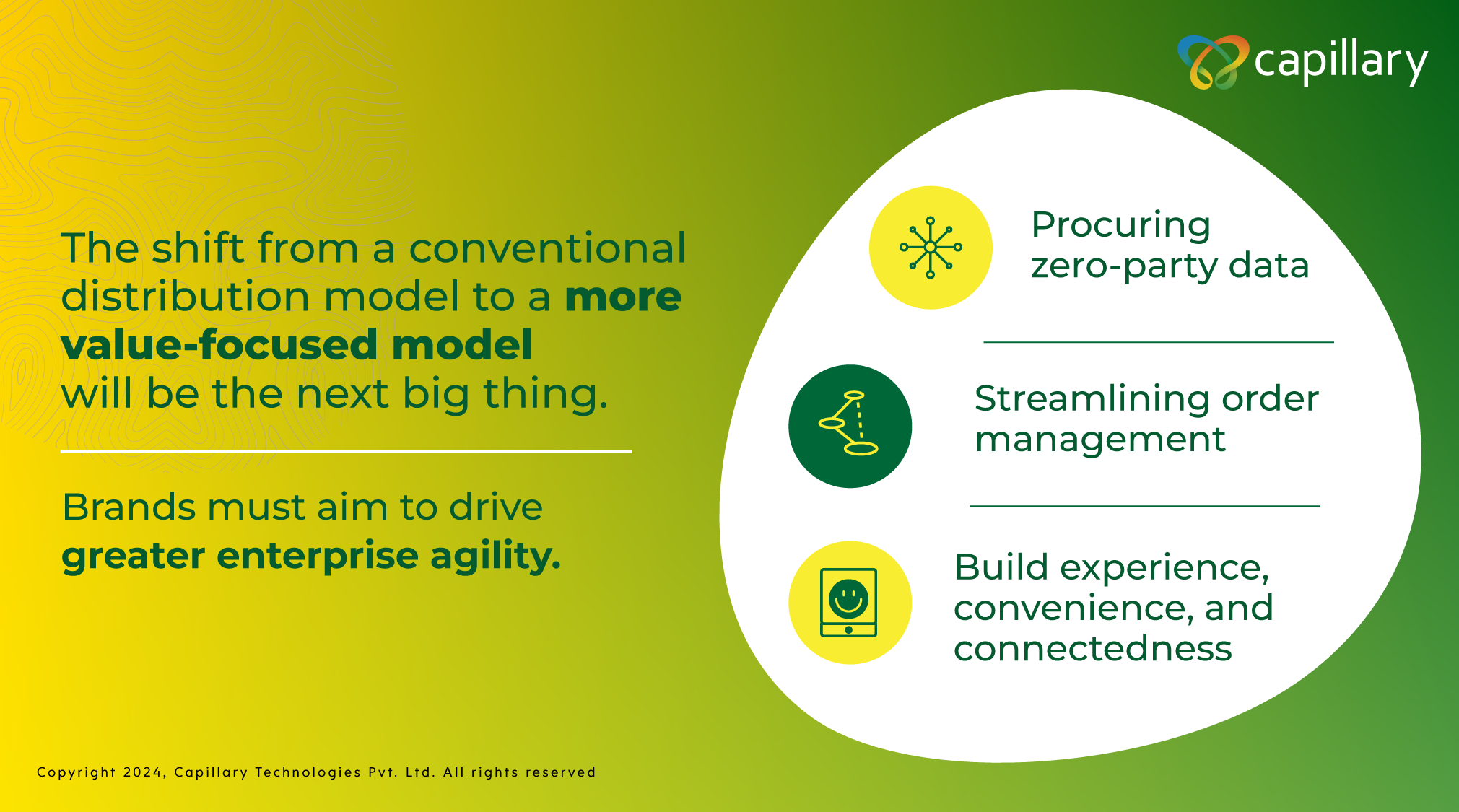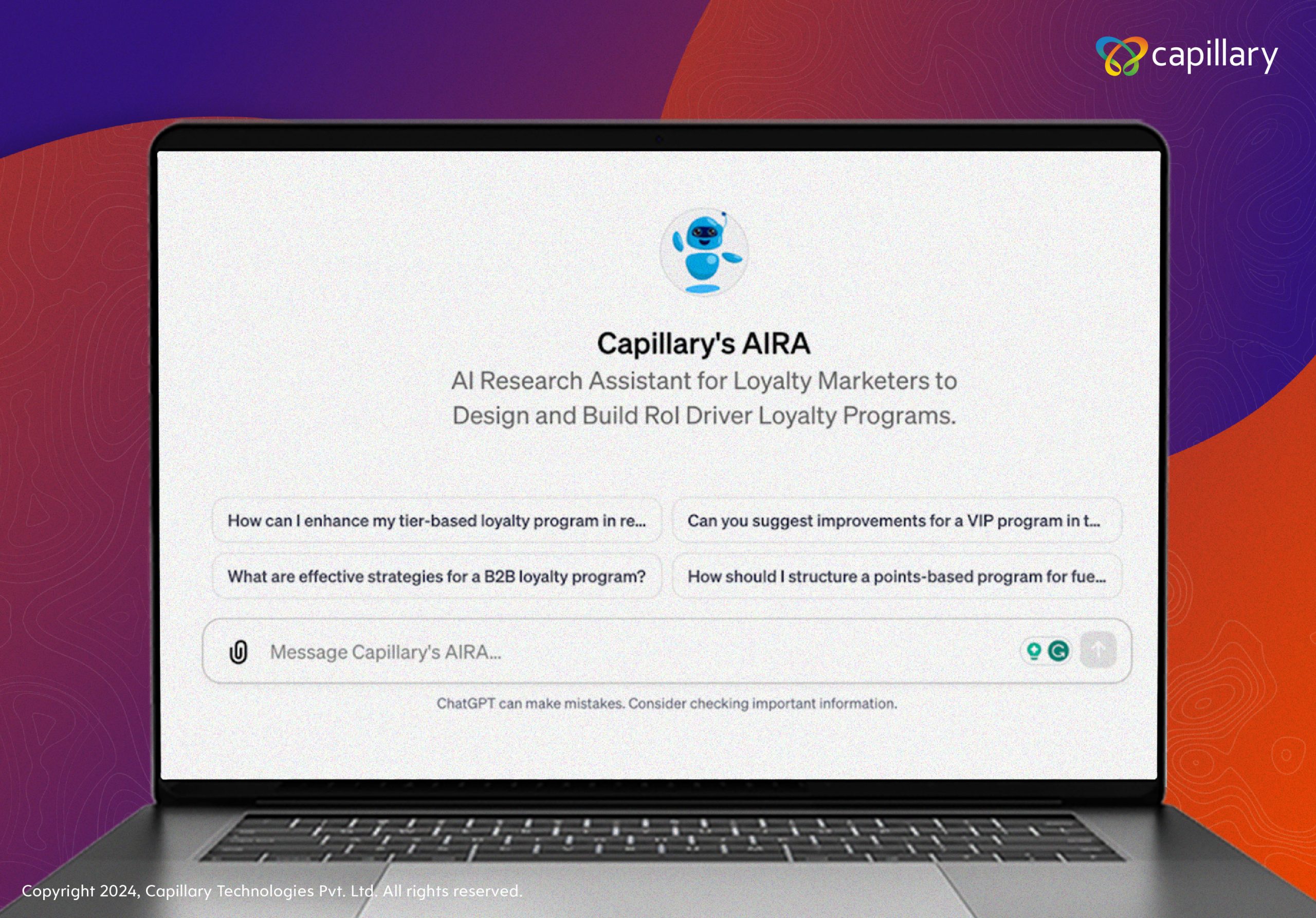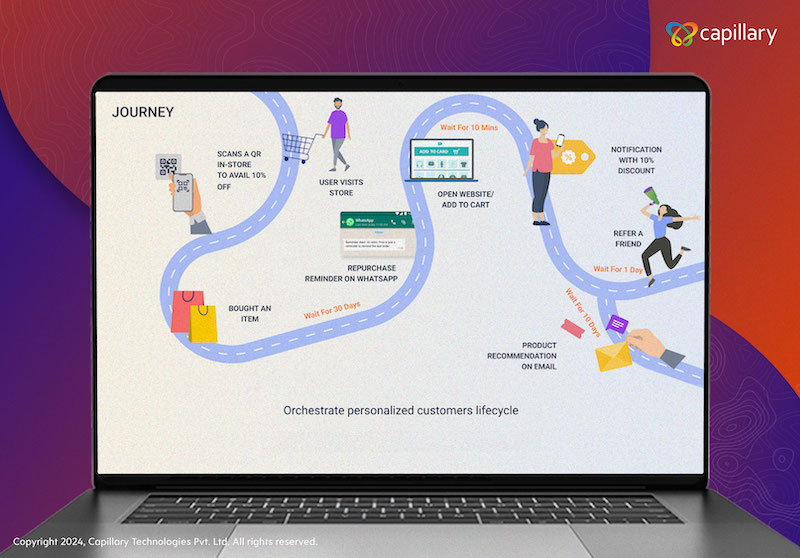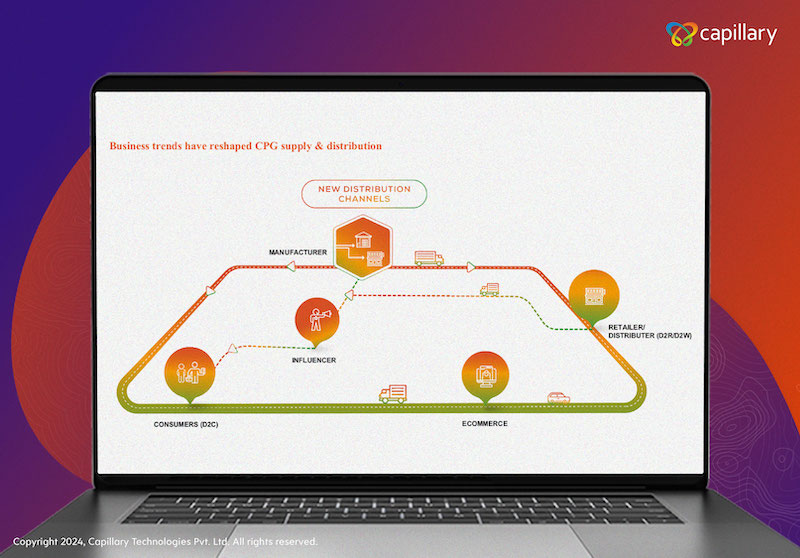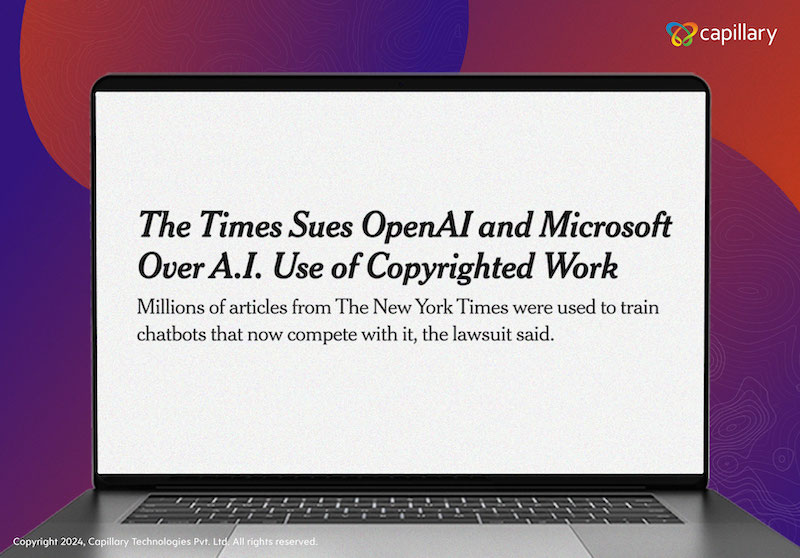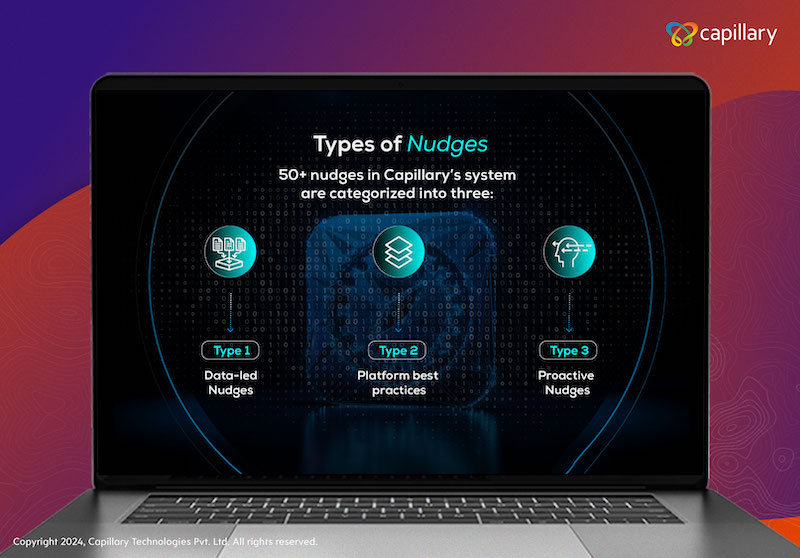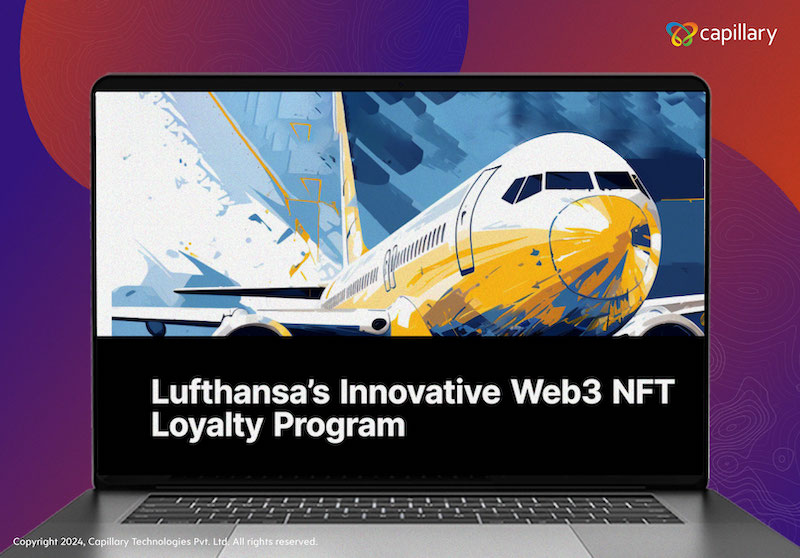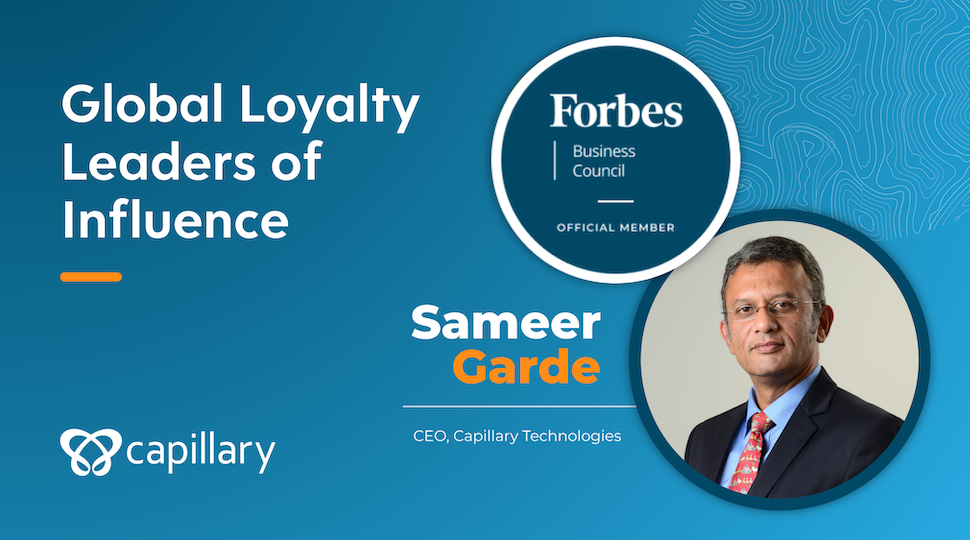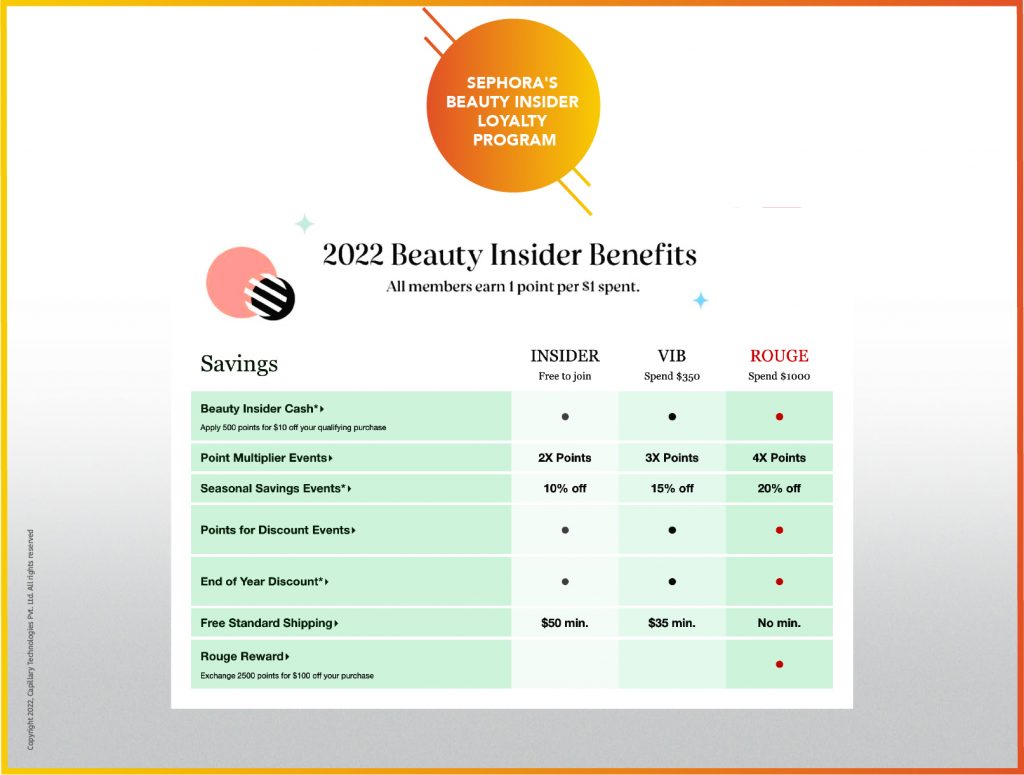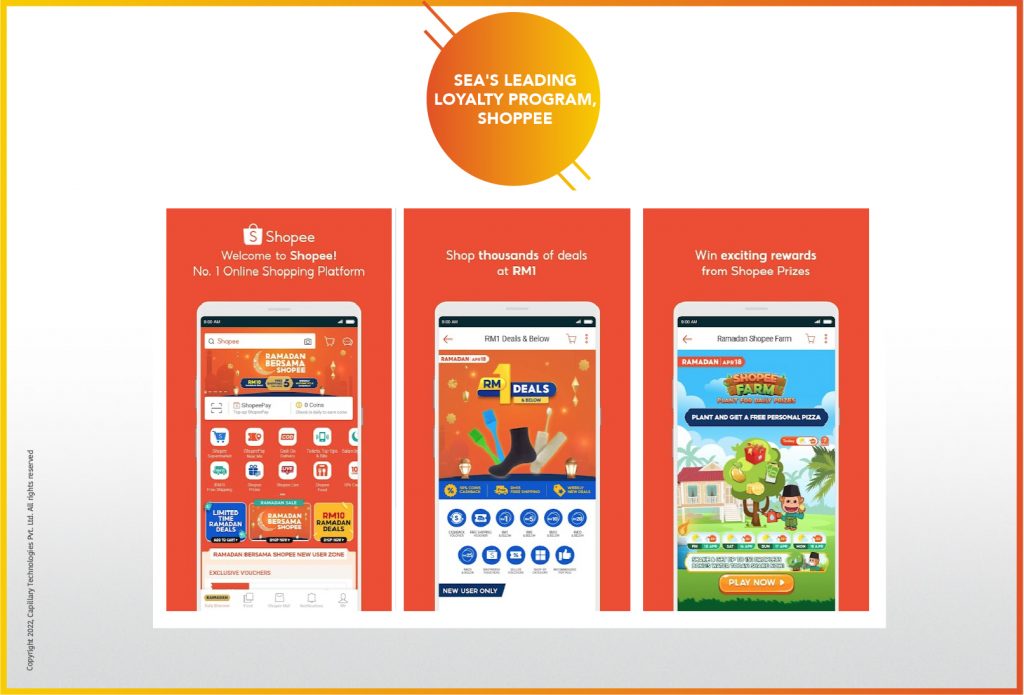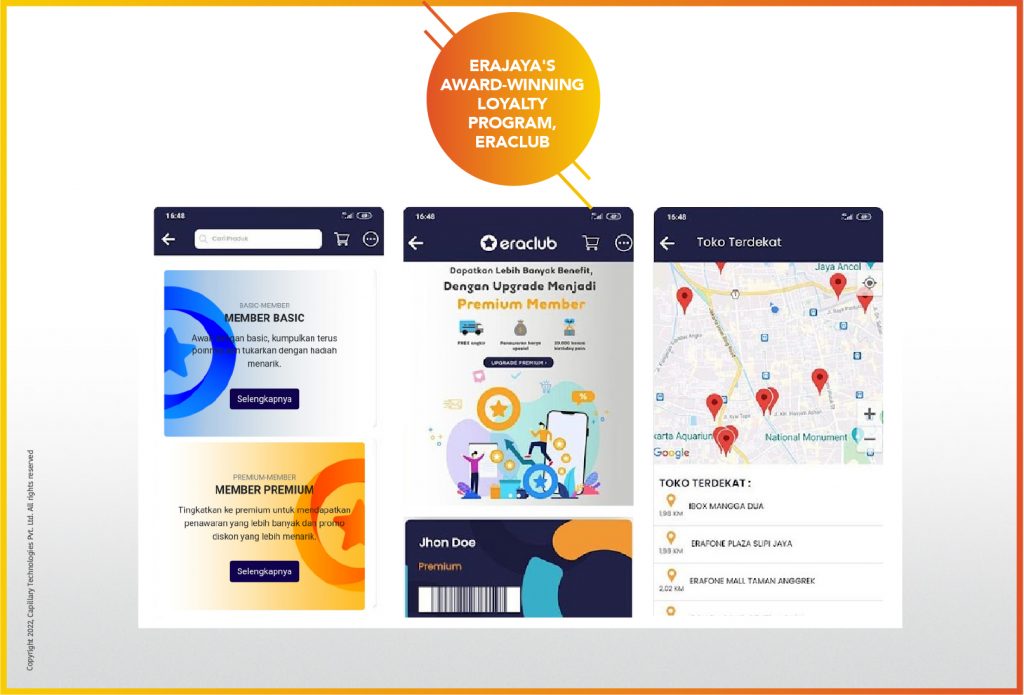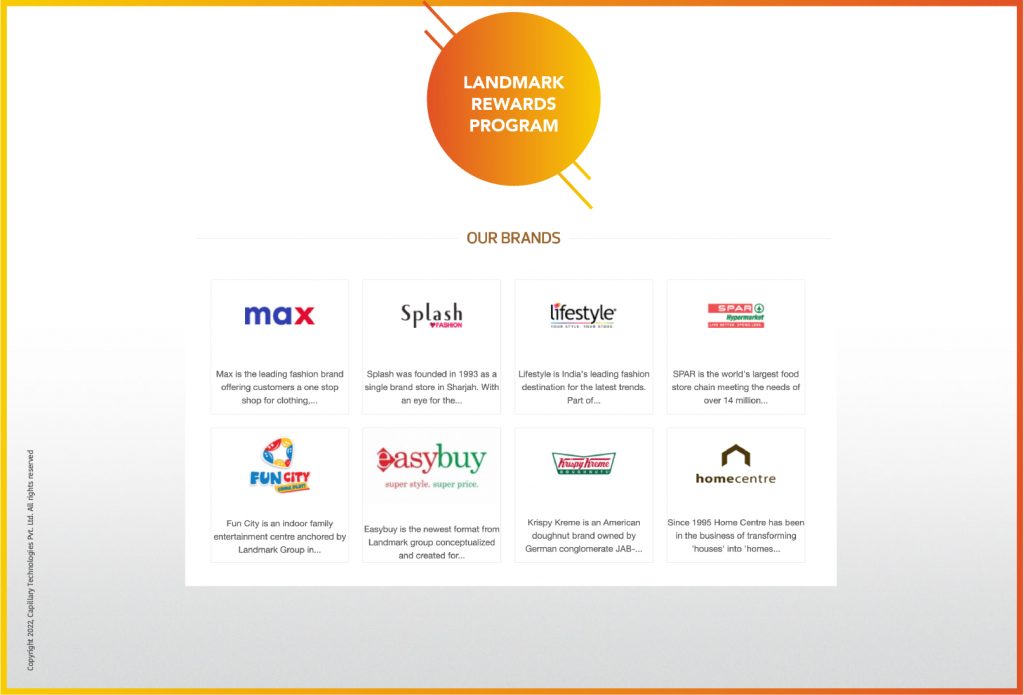Generative Loyalty is the state-of-the-art approach to customer loyalty from Capillary Technologies and Brierley, a Capillary Services Company. The Generative Loyalty framework incorporates artificial intelligence (AI) and large language models (LLMs) to create loyalty programs with robust capabilities. Powered by the latest innovations in AI, Generative Loyalty can make loyalty programs hyper-personalized, more dynamic, and more engaging than ever.
Generative loyalty continually self-generates campaigns and incentives, allowing loyalty insights to drive contextualized messaging to be constantly reinvented.
Generative Loyalty: New AI-Driven Loyalty Paradigm
Imagine a world where AI powers your loyalty management!
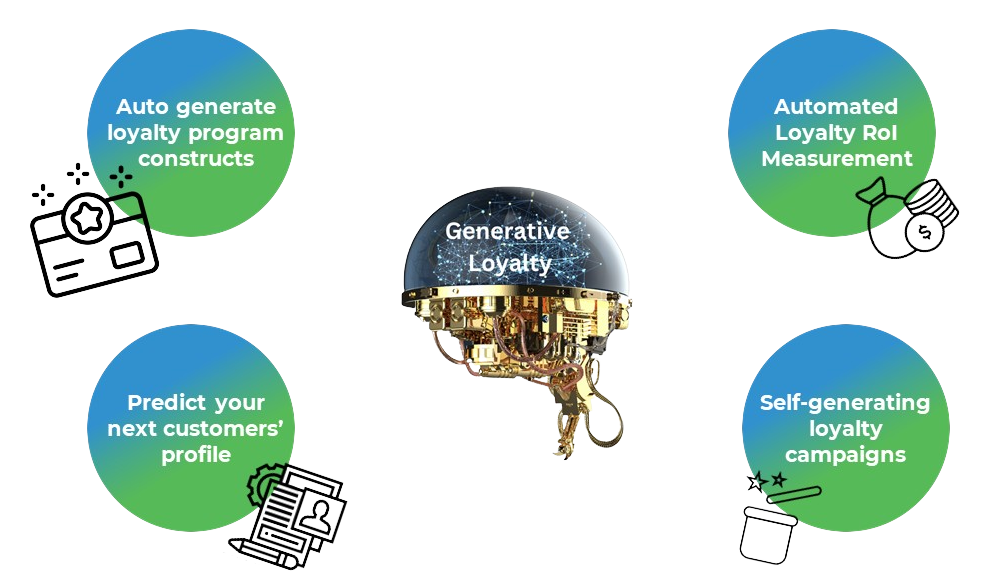
Capillary’s Generative Loyalty LLM leverages historical data with the rich context of the loyalty programs, offers, products, and customers to predict individual customer behaviors and personalize their experiences.
aiRA Chatbot & Nudge Framework
Generative Loyalty is a paradigm shift in the user experience (UX), making loyalty management as easy as talking to Capillary’s trusted loyalty chatbot AI: aiRA.
Loyalty management can be overwhelming for marketing teams, but that’s where Generative Loyalty’s Nudge Framework can help! Nudge is an advanced framework that helps manage loyalty programs and empowers marketers with valuable recommendations to guide their choices.
AskAira: An AI Assistant for Marketers
Capillary’s advanced AI chatbot, aiRA, is central to Generative Loyalty and takes full advantage of the Nudge Framework, incorporating Nudge Theory in the context of Loyalty Marketing. Using the Capillary platform with aiRA’s content nudges can give you an upper hand against the competition when looking to improve customer engagement with Nudge and deliver a great experience.
aiRA’s Capabilities
aiRA leverages the Nudge Framework to help enhance loyalty solutions! The Nudge Framework revolves around the nudge theory, which seeks to understand how people think and make decisions. The framework attempts to improve decisions while modifying unproductive influences, such as setting up a promotion but not activating it.
Designing nudges is very complex — but that’s where Generative Loyalty and aiRA’s AI capabilities come in! As an example, the following are some common digital nudges used in loyalty solutions:
- Well-timed prompt (micro-nudge) that reminds users if we have missed something and urges action.
- Optimal heads-up in the form of user notifications based on their usage pattern.
- An incentive that fosters users to use a service.
Working with 250+ brands and touching 800 million+ end customers globally, Generative Loyalty from Capillary is a product-led way to help loyalty marketers and brands improve the performance of their marketing programs by leveraging artificial intelligence (AI). One of the layers across the Capillary suite of products, the nudges can be broadly categorized into three kinds:
- Type 1 (Data-led Nudges): Know how your program is doing and potential disruptions to watch out for.
- Type 2 (Platform best practices): Low-hanging fruits to leverage product features.
- Type 3 (Proactive Nudges): New initiatives that can boost program performance to the next level.
As part of Generative Loyalty, the nudge framework empowers customers to be independent and mitigates turnaround clarifications. Although strategic initiatives, deep dives, and new long-term engagements are the current approaches adopted by Capillary, Nudge is the answer to streamlining the processes.
Generative Loyalty Ecosystems
Generative Loyalty consists of dynamic, evolving ecosystems with seamlessly integrated tools, LLMs, etc., and massive memory that grows with each customer interaction. Brands can use this framework — with the help of aiRA, of course — to create dynamic, predictive, and adaptable loyalty solutions.
Generative Loyalty allows brands to create ‘smart’ loyalty programs that create hyper-personalized customer experiences (CXs). As the most cutting-edge loyalty solution, Generative Loyalty maximizes customer engagement and optimizes return on investment (ROI).
How AI & Generative Loyalty Impact the Industry
Generative Loyalty is changing how businesses interact with customers. Brands are leaving traditional, task-driven loyalty strategies for the current focus on more interactive and engaging approaches to customer loyalty.
Marketers can use AI-powered tools to create loyalty programs that analyze customer interactions and gather insights to create dynamic, hyper-personalized user experiences (UXs). They can also use these insights to personally provide users with the most engaging and relevant content, which can build long-term emotional loyalty.
Generative Loyalty’s powerful predictive forecasting capabilities are a game-changing moment for customer loyalty. Using artificial intelligence (AI) and large language models (LLMs), programs can create dynamic, personalized customer experiences (CXs) by analyzing customer data to understand customer behavior, preferences, and interactions and acting on real-time insights from this data.
Holistic AI-Powered Loyalty Solution
Generative Loyalty brings a holistic customer loyalty approach to creating hyper-personalized customer experiences. Research shows personalization is crucial to a positive customer experience (CX). About 84 percent of customers appreciate being treated as individuals. A marketing strategy that approaches loyalty and reevaluates loyalty programs with this in mind is guaranteed to be more successful.
Approximately 70 percent of consumers appreciate connected processes for contextualized engagement, so efficient customer loyalty ecosystems must be multi-faceted. This emphasizes the value of a loyalty program’s ability to create dynamic, immersive loyalty experiences.
Powerful Features of Generative Loyalty
The following are a few of Generative Loyalty’s most powerful features:
- Predictive Personalization: AI analyzes customer data to personalize experiences, making loyalty programs more effective.
- Segmentation and Insights: The platform’s AI analyzes customer data and leverages insights to segment customers.
- Enhanced Customer Engagement: AI-driven strategies result in higher customer engagement and loyalty.
Capillary’s innovative AI loyalty solutions integrate personalization, segmentation, and predictive analytics into one loyalty framework as an innovative, customer-centric solution. Loyalty programs built using Generative Loyalty guarantees enhanced results over traditional loyalty marketing.
Loyalty programs built with AI and the Nudge framework could gather insights into customer behavior and use them to create a more dynamic customer experience (CX) or for more targeted marketing communications. This level of personalization — or hyper-personalization — will give brands an edge over competitors since it not only meets but exceeds the expectations set by traditional methods.
Preparing for a Generative Loyalty Future
Generative Loyalty and hyper-personalization will soon be the new standard for customer loyalty and engagement. By leveraging Generative Loyalty from Capillary Technologies, brands can stay ahead of the curve and differentiate themselves and their loyalty programs from competitors early.
Capillary’s end-to-end platform is a suite of products like Loyalty+, Engage+, Insights+, and Anywhere Commerce+. The Capillary CDP (customer data platform) is underlying all this, powered by aiRA (artificial intelligence framework).
Contact Capillary Technologies to learn more about Generative Loyalty and how it can enhance your brand’s loyalty solution!
